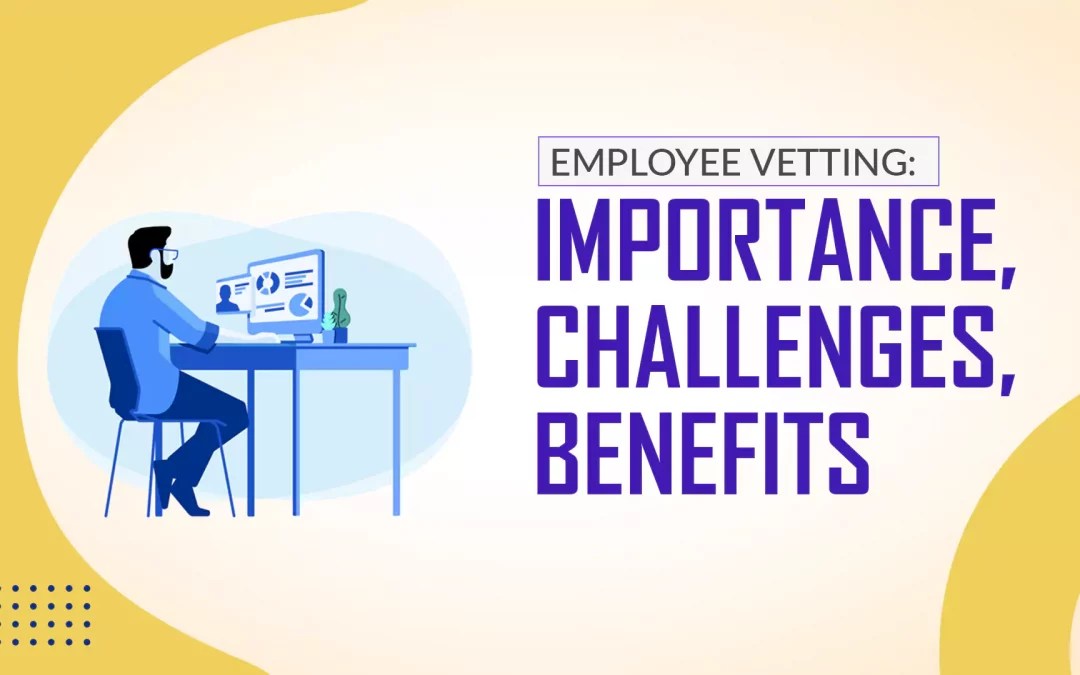Every employer wants to recruit the most talented and reliable professionals with relevant skillsets and expertise. Appointing the right person for the right job improves overall team performance and significantly contributes to organizational growth and development.
For this purpose, employee vetting is a process to screen applicants against vetting standards like BS7858. The process involves rigorous background checks that provide employers with greater insights into candidates’ qualifications, experience, and career records. By vetting their staff, employers can ensure they are hiring honest, dependable, and talented personnel. Eventually, staff vetting results in improved safety and productivity, increased morale, and operational efficiency. Businesses with fully vetted workforces stay competitive and can meet the ever-evolving needs of their diverse consumer base.
In this article, we’ll briefly describe the employee vetting process, discuss some of its challenges, and explain the benefits of hiring vetted personnel.
So, let’s get started!
What is Employee Vetting?
Employee vetting is the process of investigating an applicant’s qualifications and suitability for a position. Employers use this process to learn more about what candidates have achieved, their technical skill set, and their ability to perform the job.
While there is no single process for vetting employees, most employers perform at least one background check, review an applicant’s resume, and interview the candidate. Besides, some companies also use a wide range of resources such as social media, credentials verification, and credit reports to gain a better idea of who a candidate is beyond what’s on their resume.
Vetting potential staff allows employers to better assess their ability to perform the job and be successful in the organization. Moreover, hiring managers and team leaders can assess a candidate’s integrity and honesty with this process and make the best hiring decisions based on merit.
Key Challenges in Employee Vetting
While employee vetting is an important part of the hiring process, it is also a bit challenging. Take a look at some of the challenges companies might face while screening applicants for a job.
1. Requires Time & Effort
The first challenge with employee vetting is that it requires sufficient time and effort to thoroughly vet candidates. Employers must take the time to gather information about each candidate and perform the necessary research to learn more about them. This includes reviewing resumes, doing reference checks, and running background checks.
With so much required of each candidate, employers need to be selective about which positions they put in the extra effort for. This will help them make the right choice and recruit qualified professionals based without any discrimination.
2. Costly Process
Another challenge of employee vetting is the cost associated with it. Employers may need to pay for the services of a professional staff vetting agency to perform the necessary background checks. If the company uses an outside source for credentials verification or another type of resource, there may be associated costs.
However, some companies now use online staff vetting solutions to screen their staff. These cloud-based software systems are fast and cost-efficient and deliver accurate results in less than 15 days.
3. Risk of Bad Hiring
The third challenge with employee vetting is the increased risk of making a bad hire. While all employers want to hire the best candidates for their organization, it is impossible to predict with 100% certainty if a candidate will be successful.
Hence, when employers conduct thorough employee vetting, they increase their chances of making a bad hire. Companies that fail to thoroughly screen the candidates are more likely to make a bad decision that can negatively affect their growth.
Benefits of Employee Vetting
Employee vetting is an important part of the hiring process and offers several benefits. Some of them are given below:
1. Improved Safety
One of the biggest benefits of employee vetting is improved safety. Properly screening potential employees enables recruiters to identify any risks or concerns associated with a candidate. This data can be used to make decisions on whether or not they want to hire the candidate.
2. Increased Team Productivity
Another benefit to employee vetting is that it makes teams more productive and efficient. Employers hiring fully vetted personnel report higher productivity levels among their staff. They can satisfy their broadening consumer base and achieve their desired objectives with success.
3. Enhanced Staff Morale
Employee vetting encourages personnel to perform better and exceed their employers’ expectations. Team members feel more confident in the organization and their job security. This enhances staff morale which ultimately results in higher organizational growth and development.
4. Better Customer Service
Finally, better customer service is another unique benefit offered by vetted staff. The best candidates for an organization provide great customer service and take ownership of their actions. This way, enterprises can thrive in a competitive business environment and achieve new milestones.
Final Words
Employee vetting is an important part of the hiring process. When employers properly vet candidates, they are better able to assess their abilities, personality, and honesty. With this information, employers can make better hiring decisions and avoid making a bad hire. Eventually, employee vetting results in improved safety, higher team productivity, enhanced staff morale, and better customer service.
However, employers must be thorough in their selection process to avoid hiring someone who is not qualified for the job. Hence, with the right staff vetting practices, employers can make sure they are hiring the best professionals who can contribute to their business growth.
